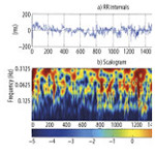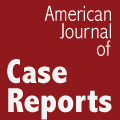Evaluating autonomic activation by auricular acupuncture using wavelet transform analysis
Alessandra de Almeida Fagundes, Daniella Galvão Barbosa Goulart, Leandro Yukio Alves Kawaguchi, Alderico R Paula-Júnior, Wellington Ribeiro, Rodrigo Alexis Lazo Osório
Med Sci Tech 2013; 54:87-92
DOI: 10.12659/MST.889075
Available online: 2013-06-17
Published: 2013-06-17

Background:
We discerned the auricular point, shenmen, and/or sympathetic protocols, that are either effective or ineffective in autonomic activation through heart rate variability analyzed by wavelet transform.
Material and Methods:
The sample consisted of 13 healthy male subjects (average age 24.53±5.14 years). Subjects followed 3 different protocols according to the stimulation point by auricular acupuncture: Eye (P1 Protocol), Shenmen (P2 Protocol), or Sympathetic (P3 Protocol). Temporary needles, 2 millimeters long, were inserted single-sided at a stimulation point: eye, shenmen, or sympathetic. Each protocol was divided into 3 phases: rest (6 min), stimulation (10 min), and recovery (10 min). RR intervals were recorded by a cardiac monitor, and a signal was used to evaluate heart rate variability via continuous wavelet transform.
Results:
The Control (P1) and Sympathetic protocols (P3) showed no meaningful differences between phases. For the shenmen protocol (P2), the low frequency component (LF) was remarkably reduced (p≤0.05) compared to others (778.16±848.84 ms2; 62.13±15.40 unit) in the stimulation phase (686.76±874.21 ms2; 55.74±18.04 unit). Simultaneously, the high frequency band (HF), influenced by the parasympathetic nervous system, (678.84±849.73 ms2; 37.86±15.40 unit) was significantly elevated throughout the rest phase compared to the stimulation phase (753.69±1073.72 ms2; 44.26±18.04 unit).
Conclusions:
Our results indicate that auricular acupuncture can influence autonomic control during rest.
Keywords: Acupuncture, autonomic, wavelet



